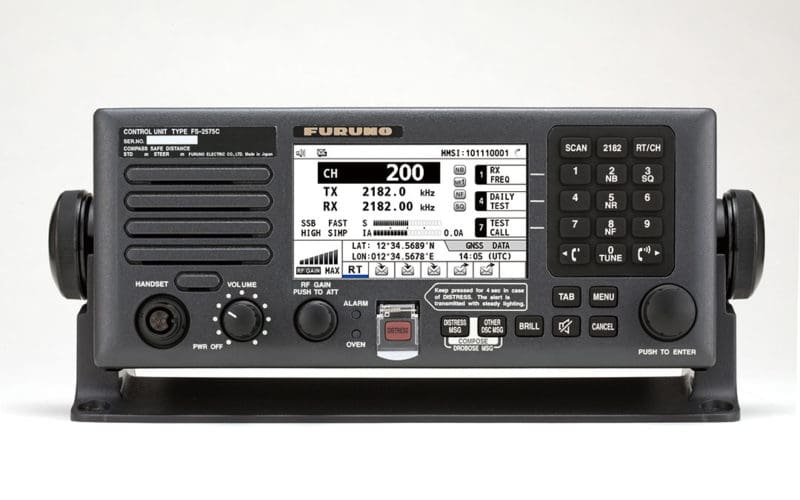Choices for voyagers to keep in touch
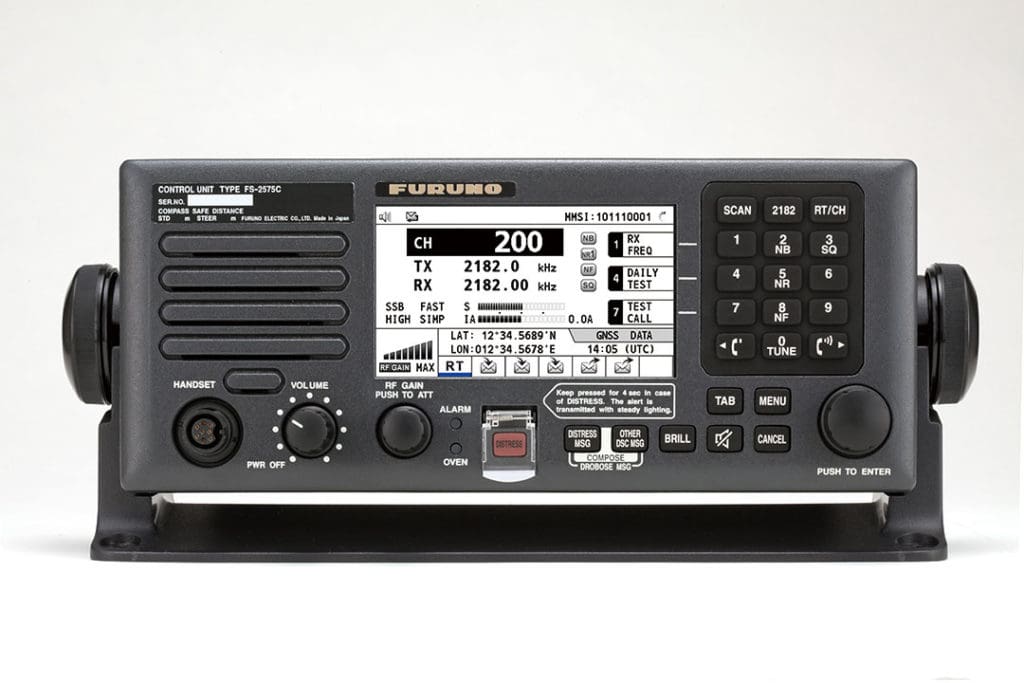
In preparation for writing this article I dug through my metal box of boat notebooks and found tattered radio logs from our Pacific crossing on Oddly Enough our Peterson 44. They feature lists of boat positions, including the missing and lost, their weather reports, official weather forecasts, boat chitchat, and reflect our widely scattered “class” of 2001 and how dependent we were on the HF SSB nets that kept us in touch.
The ability when on the ocean to communicate beyond your boat is as vital now as it has ever been. Whether sailing close to shore or on the high seas, today’s sailors use radio or telephone; the distance off a coast simply changes the mode. Inshore sailors can call each other and land-based stations on VHF radio and cell phone. Sailors heading into the blue have to bump up to HF radio and satellite communications.

When my husband Tom and I outfitted Oddly Enough for world cruising, our main communication device was a marine HF SSB radio, the Icom 710 and a Pactor II modem. With this we received weather information of all kinds from voice reports, satellite images, GRIB files and surface analyses, participated in radio nets, and communicated ship to ship with boats that were out of sight and talked to land through intermediaries. We did not carry a satphone as this was beyond our budget.
Today, satphones are still relatively expensive but their capabilities have greatly expanded making them a reasonable choice for all but the most budget-conscious sailor. Even then, the initial cost of a new marine radio system may bump them up to a satphone.
Sailors who cruised in years past will recognize equipment names. Both radio and satellite communication are still largely in the hands of a few companies — Icom, Furuno, Inmarsat, Iridium, Globalstar. These are all well-known names. A major difference in what they offer is data, which takes up a lot of bandwith. Because satphone usage is expensive, the technology has worked hard to improve how efficiently information is transferred.
In SSB radios, only two viable choices remain. One of these, the Icom 803, is the latest in the line which included our 710.
Dedicated channels
Marine SSB radio allows the user to access a number of dedicated channels, making it both easier than amateur radio and frustrating for users who want access to all available frequencies. The 803 also now receives and sends distress calls through a digital selective calling (DSC) watch-keeping receiver that continually scans for distress calls and a GPS receiver that collects your boat’s position and a large distress button which when pressed sends out the info with automated calls for help. In recognition that email is vital to high-seas communication, the 803 provides dedicated email channels which can be preset for a combination of pactor modem and computer, making the daily ritual slightly less cumbersome. It can also be opened up for use as a ham, or amateur band, radio.
The Icom 803 purchased alone is $2,700. The Pactor 4 adds another $1,500 to $1,850 though older models are available cheaper. Purchasing a package from a friendly radio shop that comes with advice on setup is advisable. In addition to the radio itself, you’ll also need to purchase and set up an antenna tuner for your backstay antenna.
You can use airmail software to connect your SSB radio to the Internet, where you can access GRIB files, a host of NWS weather products, and email through Winlink, which is free for ham radio operators to use once it’s set up, and Sailmail, available by subscription (current fee is $250/year) and acceptable for those running a business. You can obtain lists of radio nets from radio shops or online for both keeping in touch with other boats and obtaining weather routing. Net operators like Chris Parker offer routing by radio to subscribers; weather nets are also great ways for nonsubscribers to know what’s happening with boats in their area.
The Furuno FS-1575 is another HF SSB radio available to voyagers. It comes as a four-unit package of transceiver, handset, control unit and automatic antenna coupler all for $8,000. This unit is designed to be used by both recreational and professional mariners and complies with the latest GMDSS and SOLAS requirements with 256 user-specified channels that can be selected via a rotary knob or direct keypad input.
For emergency use
When we cruised on Oddly Enough other sailors carried satphones mostly for emergency use. Though the price of phones has come down, between subscription prices and airtime using a satphone still costs typically between $0.80 and $1.50 per minute. Calling a satphone from a landline or cell and calling between satellite networks is even more expensive.
But our expectations for communicating have changed radically. When we sailed in Indonesia in 2009 it was exciting to see a cell tower looming over an island because it meant we could call the US, though the cost to people back home was huge. But it wouldn’t have occurred to us to check email, send a few texts and look at Facebook or the front page of The New York Times, all of which are only a fraction of the plugged-in things I’m performing right now between words.
Communication via SSB is done on a schedule and depends on atmospheric conditions for transmission and reception. If you want to be able to communicate randomly, satellite networks offer a number of options. Initial entry into sat comms is cheaper than SSB but keep in mind that satphone companies require a subscription and you pay whether you use the service or not.
Satellite phones work by sending radio signals to a satellite which then relays the signal to a land-based phone system. Satellite communications are not subject to interference from weather or atmospheric conditions, but to make and receive calls your device has to be in sight of a satellite, just like a cell phone has to be in sight of a tower. Iridium maintains the widest network of satellites, and they orbit the earth north and south and cross the poles so even Antarctica has coverage. It’s easy to get online cart quotes and the price for equipment doesn’t vary much as there are not many discounts; it’s the extras that vary.
For the Iridium 9575 Extreme Satellite Phone you pay $1,145. A monthly plan with 150 minutes is $109.95, and you can usually get better deals if you pay for longer term. A Beam Iridium Mast/Pole Passive Antenna (RST710) is $185, for a total cost of $1,439.95 (reminder that the monthly plan includes airtime and subscription and will continue after initial purchase). Satphones operate line of sight, so if you don’t want to go on deck and flip up the stubby antenna to find a signal you’re looking at purchasing an external antenna and cable setup designed for marine use. This is NOT one of those flashy-looking domes which you see on big boats, but a small cylinder that goes on the mast.
A number of companies offer satphone packages that also include compressed cruiser email and basic weather info. You can subscribe to a weather routing service, though having had experience with talking to a router over a live radio net I would take that over emailed weather routing. While voice calling is available on satphone it quickly adds up. OCENS offers an Iridium 9575 package for boaters at $2,000 which includes $565 for 6 months of prepaid airtime at 200 minutes per month plus the satphone subscription. MailaSail is a British company that offers packages and their teleport-it service, which besides email and weather includes a blogging system that will update social media like blogs and Facebook pages.
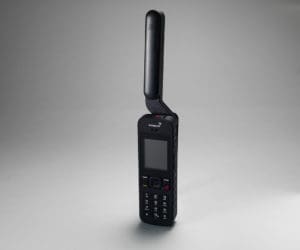
The Inmarsat IsatPhone 2 is considerably cheaper than the Iridium 9575. Inmarsat’s 14 satellites are stationary in orbit at the Equator, which gives good coverage everywhere except at the poles. The satellite service provider bluecosmo.com offers the Inmarsat IsatPhone 2 for $629 with the IsatPhone Global Monthly Plan of 200 minutes for $109.99, an IsatDock Marine Active Antenna (ISD710) for $620, at a total cost of $1,358.99 (monthly plan will continue after initial purchase).
Inmarsat also offers SAILOR Fleet One which is their intro level into the wider world of broadband and web browsing starting at $3,000 and you will also pay monthly service plans calculated in megabytes. Fleet One’s increased web capacity works only along the coasts; to get true high seas Internet you need to bump up to SAILOR 150 FleetBroadband which starts at $8,000 for equipment costs. If you see a boat with a dome, you know someone on board is addicted to web browsing or has kids to entertain.
Globalstar, one of the original satphones, still offers an inexpensive version for around $400 for a refurbished phone that works well for extended coastal cruising.
A boat hotspot
Though top cell phones these days cost as much as basic satphones, there are ways to create a wifi hotspot on a boat to allow your cell to communicate with a satellite network for voice and data. The Redport Optimizer is a so-called BYOD (bring your own device) addition which uses a satellite network and satphone to create a wifi hotspot and allow you to connect cell phones, tablets, computers into the satellite signal.
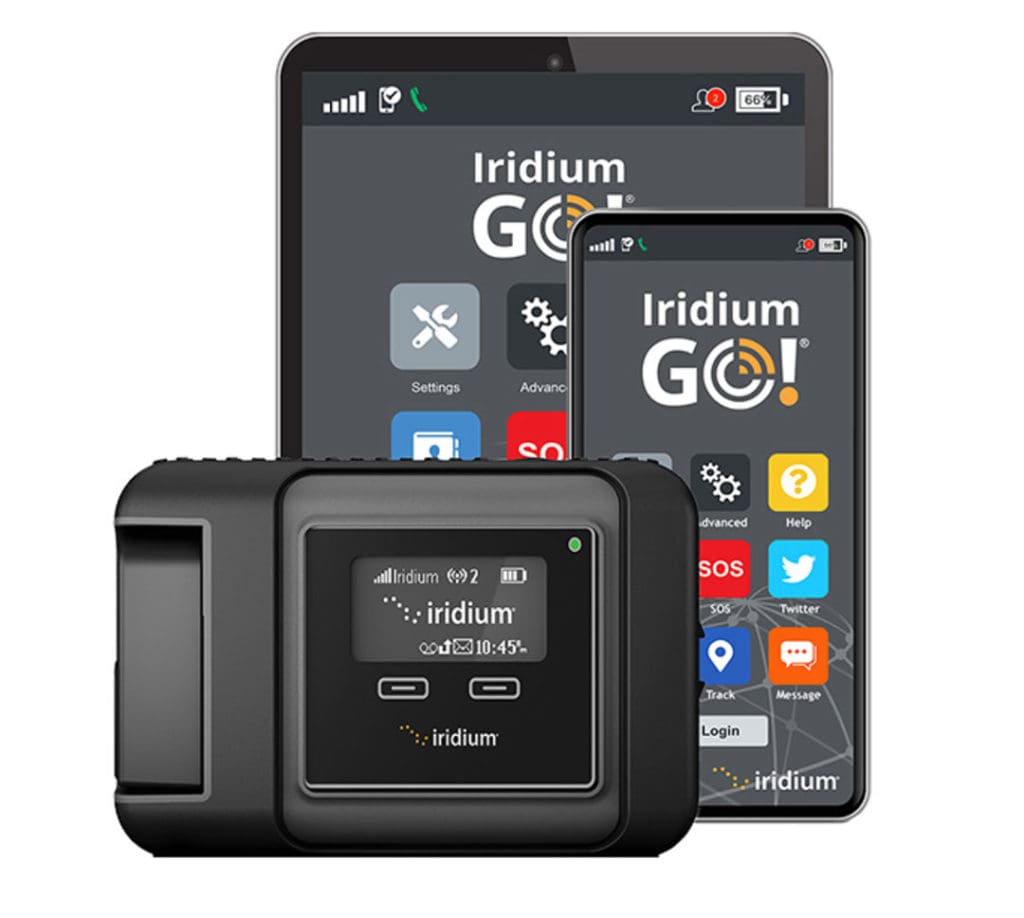
But if you want to bypass the satphone entirely in favor of cellphone, there’s the Iridium GO! Like a satphone, you can purchase an external antenna so you don’t have to go on deck to use it. You also pay subscription fees and airtime. Companies like OCENS offer monthly packages tailored to the marine user. Optimized cell phones require specialized apps to get what you want offshore. You can’t simply call up your chrome browser and your gmail or TikTok or YouTube. Close to the coast you can use the phone as a cell again, remembering that while doing so you are still paying satellite subscription fees plus your cell service. You might want to consider how rugged your phone is if going this route.
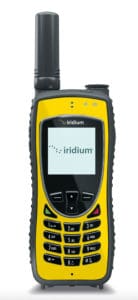
Quoting bluecosmo, Iridium GO! Global Smartphone device is $694; the monthly service plan comes in at $109.95 for 150 min voice and data; and the Fixed Installation Accessory Pack $400 (antenna kit) for a total cost of $1,203.95.
Lastly, there’s the world of two-way satellite communicators like the Garmin InReach which uses the Iridium satellite network to provide texting capacity, tracking, basic email and weather information, plus SOS and GPS positioning. The Garmin InReach Mini (it really is tiny and light) costs around $700 with an annual airtime plan of $50 monthly. This field is expanding with other makes going hybrid to provide wifi and cellular service, but these are outside this discussion.
One thing for long-distance sailors to ponder is not just how far away from home they plan to cruise, but where. If you plan to stay in the Caribbean your time at sea will be interspersed with places with lots of services. If you plan to cross the Pacific, you will have other considerations.
1) Liferaft: Satphones are rugged and water-resistant enough to go into a ditch bag. While the Iridium GO! is rugged, it only works if you also have a cell phone. You can get “ruggedized” cell phones but your traditional models won’t stand up like a satphone, which was designed for outback use.
2) Battery time. Easy to depict: The turned-on Iridium GO! has 15 hours standby time and 5.5 hours talk time; the Iridium 9575 has 30 hours standby and four hours talk. The Inmarsat has by far the longest standby time, 100 hours, and eight hours talk.
3) SSB radio is a great resource, but to the degree that DSC has come to substitute for active monitoring of radio distress frequencies, the ability of satphones to make voice distress calls is a consideration in their favor.
Because of the complexities of setting up a communications system to achieve a boat’s goals it’s not a bad idea to work with someone besides your friendly cruiser crowd. For radio there are several dedicated radio shops that can help with connecting hardware and figuring out how to get email to work. Satphone purchasers can work with sat coms shops that link you to outside purchase sites to get a phone then offer plans for mariners with airtime as well as compressed email and basic weather routing.
Whatever route you choose, it pays to plan carefully. ν
Ann Hoffner and her husband Tom Bailey voyaged for 10 years aboard their Peterson 44 Oddly Enough, starting in Maine and ending in Borneo. Hoffner spent the summer of 2021 sailing Ora Kali, her new Sabre 30, from New Jersey to Maine. She is is a member of the Society of Environmental Journalists, Investigative Reporters and Editors, and Boating Writers International.

